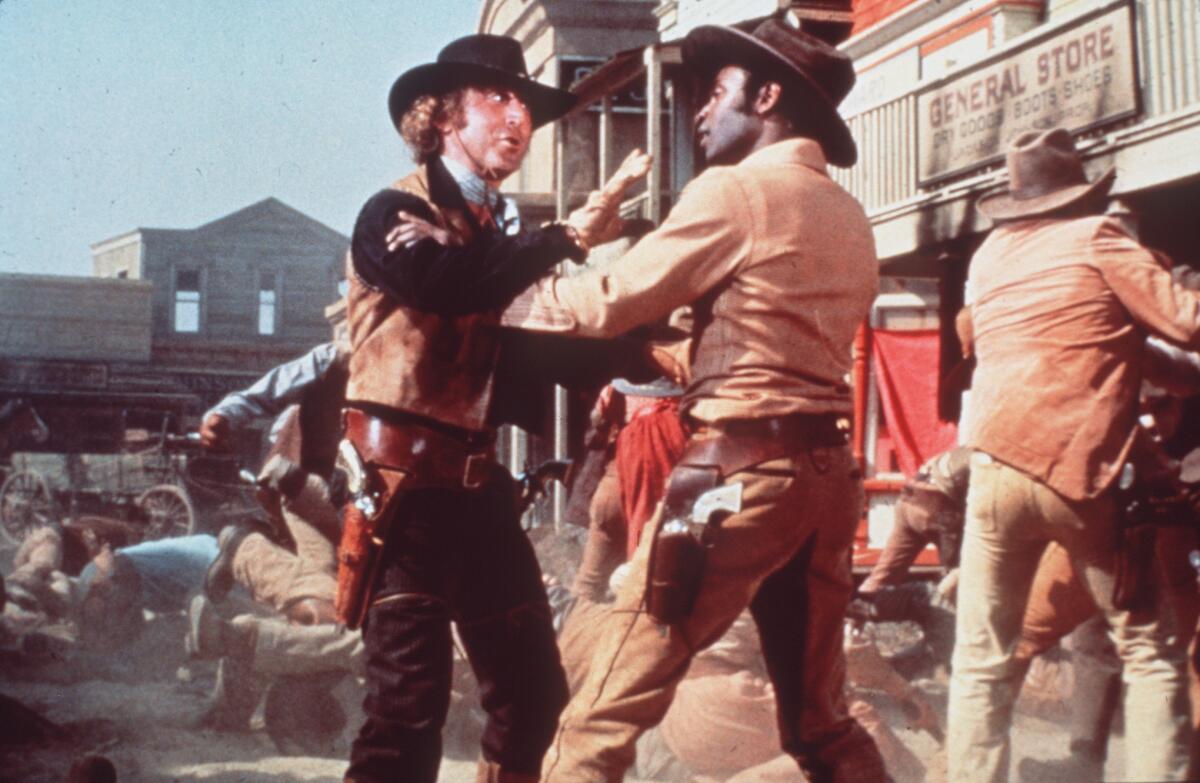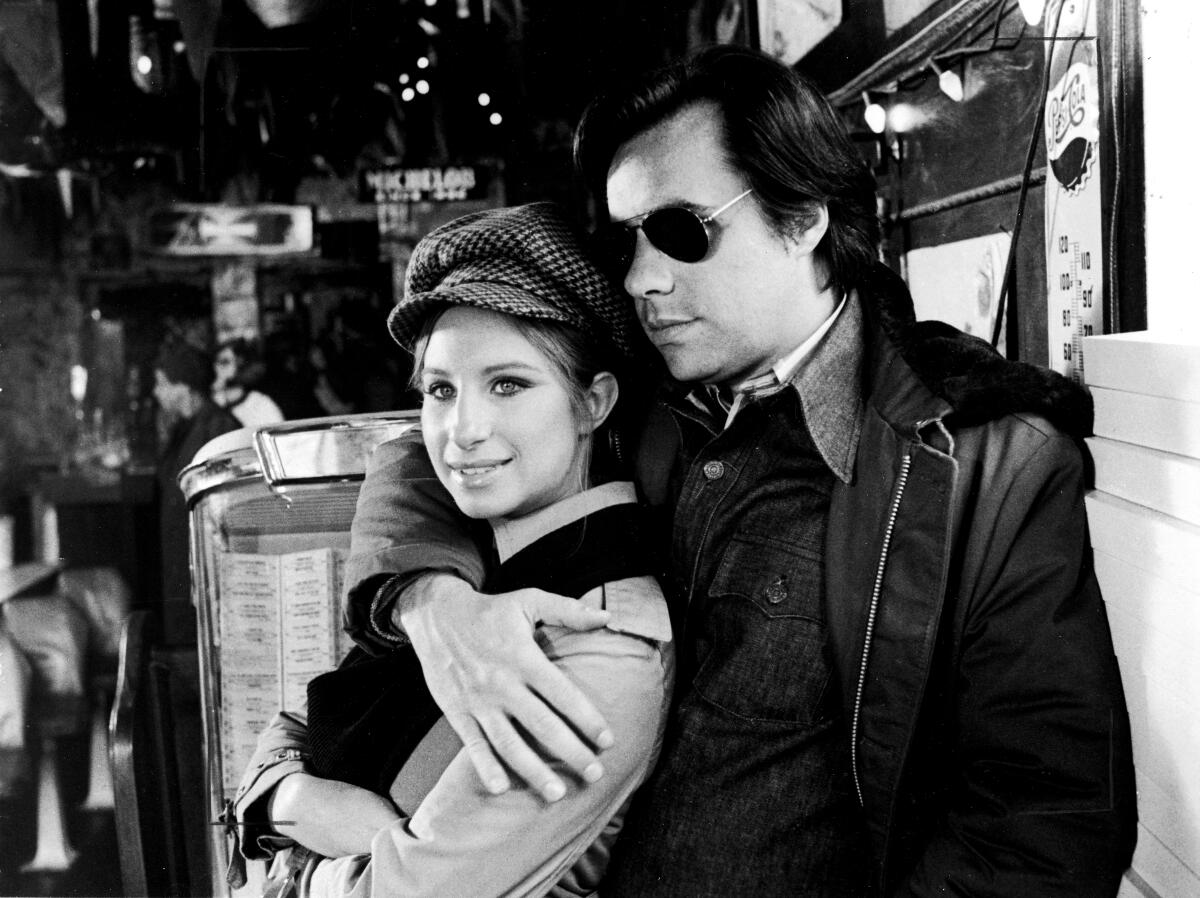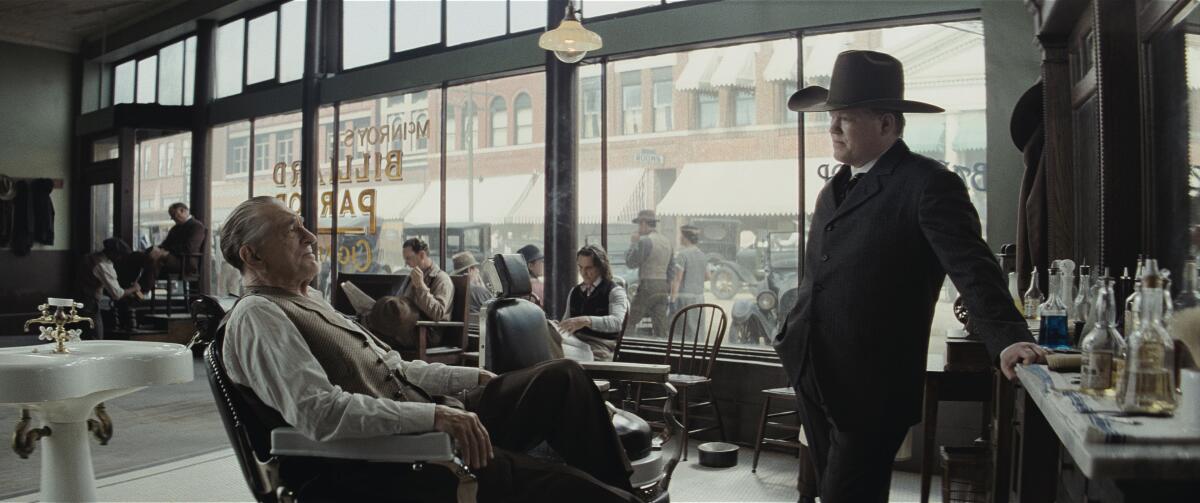Quentin Tarantino’s plans for the Vista take shape, plus the best movies in L.A. this week

- Share via
Hello! I’m Mark Olsen. Welcome to another edition of your regular field guide to a world of Only Good Movies.
Last week’s newsletter was finished before we learned of the award winners from this year’s Sundance Film Festival, with top prizes going to Alessandra Lacorazza Samudio’s “In the Summers” for the U.S. dramatic competition and Brendan Bellomo and Slava Leontyev’s “Porcelain War” for the U.S. documentary competition. Lacorazza Samudio also picked up the directing prize, while Jesse Eisenberg won the screenplay award for his “A Real Pain.”
We narrowed our own Sundance favorites down to 10 films to keep an eye out for, including Nathan Silver’s “Between the Temples,” Natalie Rae and Angela Patton’s “Daughters,” Sean Wang’s “Dìdi (弟弟),” Rose Glass’ “Love Lies Bleeding” and Brett Story and Stephen Maing’s “Union.”
We also concluded our project “The Independents,” which we began a year ago at Sundance 2023, with the final piece publishing soon. The project followed seven filmmakers throughout the year from the festival onward. In this final installment we asked them the simple question of whether Sundance still matters. All came back saying yes.
As Thembi Banks, director of “Young. Wild. Free.” put it, “After Sundance there is a very specific and special kind of space that you occupy. It’s a beautiful one, but it’s still full of the realities of being an indie filmmaker.”
Quentin Tarantino’s IB Technicolor festival at the Vista
Some savvy local filmgoers had noticed there was a monthlong hole in the schedule for the Vista Theatre between the 70mm presentations of “Oppenheimer” and “Dune: Part 2.” This week the theater announced that all of February will be a celebration of IB Technicolor prints from the collection of the theater’s owner, Quentin Tarantino. The filmmaker appeared on an episode of the “Pure Cinema Podcast” to talk with co-hosts Elric Kane and Brian Saur about the series and give his most extensive remarks yet on his vision for the theater, which reopened in November.
Tarantino also owns the New Beverly Cinema and while both theaters feature a policy of only projecting movies on film, the director said that he “wanted them to have a bit of a different personality.”
Tarantino added, “With the case of the Vista, it’s one of the beautiful standalone jewel-box cinemas in California — maybe even the world, especially for its size. How nice it is and how pretty it is, with its 400-seat size, which is big, but not too big. There still is a neighborhood-theater quality, but also a classic-theater quality to it.”
The plan is to show what he called “top-line classic revivals,” titles such as “The Deer Hunter,” “The Good, the Bad and the Ugly” or “Lawrence of Arabia” that can sustain a four- or five-day run. He also noted there will be an ongoing series of classic comedy matinees on weekends.
Tarantino acknowledged that the Egyptian Theatre in Hollywood, owned by Netflix and programmed in partnership with the American Cinematheque, had reopened around the same time as the Vista. “We’re not really in competition,” he said, “because it’s sort of like, hey, the more cool theaters that we have in Los Angeles, the better.”
However, Tarantino playfully admitted that he felt the Cinematheque’s 70mm festival was “stealing my thunder here a little bit” and so for the Vista, he decided to use his collection of IB Technicolor film prints to “really show the theater off.”
“The Vista is so colorful,” Tarantino said, “so the idea of seeing those films projected in 35mm on that screen with that throw and films ranging from the ’30 through the ’40s, ’50s, ’60s, even some in the ’70s — I thought that would really make the projectors pop. That would make the screen pop. And it would just create a really lovely atmosphere in the auditorium and a cool thing for the neighborhood. Finally, now I get to really kind of show what we can do now. Now it’s a little bit more Quentin-ish, what we’re doing.”
IB Technicolor is a dye-transfer printing process (the IB stands for “imbibition”) that is now effectively extinct. Due to the specifics of the process, the colors do not fade, so prints made with the process have extreme archival value. As a brief documentary from the George Eastman Museum notes, “to truly understand and appreciate the beauty of his process, you have to experience it in person.” Which makes this dip into Tarantino’s own collection all the more exciting.

The films in the Vista’s series indeed have a “Quentin-ish” eccentricity to them — not all of them are the eye-popping extravaganzas one might expect. The series opens with a double-bill of nostalgia: George Lucas’ 1972 “American Graffiti” paired with Robert Mulligan’s 1971 “Summer of ’42.” Sydney Pollack’s 1972 “Jeremiah Johnson” will be paired with another revisionist western, Arthur Penn’s 1970 “Little Big Man,” while Michael Winner’s “Death Wish” will play with Sam Peckinpah’s equally brutal “Straw Dogs.”
Non-action titles include Peter Bogdanovich’s 1972 screwball comedy “What’s Up Doc?” and Bob Fosse’s 1972 “Cabaret.”
As pointed out in the conversation on “Pure Cinema Podcast,” the rarest film in the program is Daniel Petrie’s “The Main Attraction” from 1962. Other oddities include Henry Levin and Dino Maiuri’s 1966 “Kiss the Girls and Make Them Die” and Giorgio Ferroni’s 1966 “Secret Agent Super Dragon.” Midnight shows in the series will include Christian Marquand’s 1968 “Candy,” Richard Fleischer’s 1975 “Mandingo,” Boris Sagal’s 1972 “The Omega Man” and Mel Brooks’ 1974 “Blazing Saddles.”
‘Tótem’ is the first must-see of the year

This week it was announced that Times film critic Justin Chang will be leaving the paper for a post at the New Yorker. While we are, of course, sad to see him leave our pages, we are overjoyed to see him land at one of the most historic perches in film criticism and look forward to reading him there.
His final review for The Times is of Mexican filmmaker Lila Avilés’ “Tótem,” the story of a 7-year-old girl named Sol (Naíma Sentíes) grappling with the impending death of her father from a terminal illness.
As Justin notes, “This is a movie about a celebration astride the abyss, and, as it continues, it takes on the eerie power of a séance. By a certain point we seem to have wandered, alongside Sol, into a strange netherworld between life and death. It’s as if we have become the ghost in the machine, the specter looming behind the camera, and we want, against all reason, to comfort her, to let her know that she is neither unseen nor alone. The sensation soon passes, as many sensations do. But you can’t quite shake it off, or rid yourself of this movie’s cumulatively shattering power.”
Carlos Aguilar spoke to Avilés about the film. She addressed the story’s connection to the spiritual world when she said, “I fiercely believe that we, humanity, must listen to our intuition more closely, to let go of control a little bit and connect with something deep within us.”
She added, “Cinema has become my totem. When you’re filming, everyone — the sound engineer, the actors — is in that space of full presence that is more present than the present. You become very focused on your consciousness.”
Other points of interest
Indigenous pre-Code at UCLA
Tonight begins a program at the UCLA Film and Television Archive curated by Adam Piron titled “Save the Man,” devoted to a quartet of films from pre-Code Hollywood that centered the nation’s history with Indigenous people. As the series’ program notes state, “These four forgotten films each reflect the era’s affinity for breaking on-screen taboos and imperfect examinations of contemporaneous prejudices. They stand out as being both of their time and beyond the studio filmmaking of today.”
The program opens with two films by W.S. Van Dyke, 1933‘s “Eskimo,” which won the Oscar for editing, along with 1934’s “Laughing Boy,” starring Ramón Novarro. Also part of the series are Alan Crosland’s 1934 “Massacre” and John Francis Dillon’s 1932 “Call Her Savage,” starring Clara Bow.
“Eskimo,” “Laughing Boy” and “Massacre” will all screen in 16mm, while “Call Her Savage” will play in 35mm at the Autry Museum.
A Jack Fisk tribute

The American Cinematheque is saluting production designer Jack Fisk, currently an Oscar nominee for his work on Martin Scorsese’s “Killers of the Flower Moon.” Fisk’s work is always enveloping, creating environments steeped in history that you want to just step inside.
The series will open with a free screening of “Flower Moon” at the Aero on Sunday, followed by Alejandro González Iñárritu’s “The Revenant.” Other films in the series include a 70mm presentation of Paul Thomas Anderson’s “The Master” at the Egyptian on Feb. 10, plus Anderson’s “There Will Be Blood” in 35mm at the Egyptian on Feb. 11. Terence Malick’s “Badlands” and “Days of Heaven” will also play as part of the series.
‘The Beaver Trilogy’
On Tuesday, Feb.6, Mezzanine will present “The Beaver Trilogy” introduced by filmmaker Dustin Guy Defa. Never commercially available on home video, this is a legendary series of short films directed by Trent Harris that he eventually combined together. It all began at a 1979 talent show in Utah, where a young man known as “Groovin’ Gary” impersonated Olivia Newton-John. Then came a 1981 fictional retelling starring a then-unknown Sean Penn and finally another dramatized version in 1985 starring Crispin Glover. There is something joyful, weird and surprising as the variations of the story move from one to the other, gathering an unexpected momentum and energy when taken together as a whole.
As Mezzanine’s programming staff notes, the trilogy creates “a layered and poignant exploration of small-town dreams, celebrity culture and the interplay of performance and gender identity. ‘The Beaver Trilogy’ is a triumph of regional independent cinema and a film that you won’t soon forget.”
Only good movies
Get the Indie Focus newsletter, Mark Olsen's weekly guide to the world of cinema.
You may occasionally receive promotional content from the Los Angeles Times.




